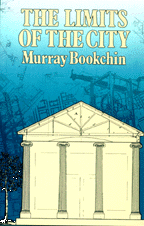
This past Sunday, I volunteered to be a part of a group of EMAC students who were all collaborating to document the PAC-WE gathering. The idea behind the event was both a unique and noble one; one I was excited to be a part of. In brief, the idea was to gather all the Dallas area artists for both networking purposes but also to make a statement about healthcare. It is more difficult to obtain insurance when you work as a freelance contractor. Pretty cool idea, right? Unfortunately, the turnout was somewhat below expectations. I understood that something like three thousand ponchos were ordered for the participants and I would be shocked if there were more than two hundred and fifty people in attendance.
Why is this? Well, I bet that a lot of people who intended to show up didn’t because they were hung over or too tired or any of those other excuses we have for skipping out on our weekend obligations. Also, one may argue that we are in the conservative South and getting a bunch of liberal artists to come out and support health care reform is just not as easy as it would be in, perhaps, Chicago. Plus, being we are in Texas, let’s face it, Sunday morning is when “most folks go to church”.
Now, apart from these crass stereotypes, why was PAC-WE not a great success? I may be a terrible cynic, but I found myself more interested in capturing on film all the participants who were capturing the event on film. There was this great push to artificially manufacture something much bigger than it actually was. I would guess that of everyone who showed up and donned the yellow ponchos, fifty percent or more were walking around with cameras and interviewing their fellow participants. (“Okay, I’ll interview you first and then you can interview me…”)
What makes some “flash mob” attempts more successful than others? They took advantage of the primary networking tools in today’s communication landscape. There was a Twitter feed, a Facebook page, and of course, a website to drive the whole thing. Maybe it’s all perception, maybe to those whom orchestrated Sunday’s event, it was everything they hoped it would be. As the main organizer noted, “It’s a start.”
Clay Shirky touches on flash mobs in Here Comes Everybody, noting they have been a more recent phenomenon. We have new methods of organizing people in a relatively effortless and timely way. This kind of collective calls for no formal invitations or RSVPing, the time it takes to send the message out is instantaneous, all you have to do is have an idea and a couple of friends to help spread to message, and best of all, there is little to no cost. However, because of these attributes of flash mobs, the organizer can never know how many people to expect and perhaps that has to be considered when perceiving an event’s “success.” (That also may explain why there was about one police officer for every twenty people there, which is overkill if you ask me.)
It is probably worthwhile to consider just what sort of flash mobs we have seen documented. In the US the idea is really a novelty and that is what PAC-WE felt like. Regardless my feelings about the need for healthcare reform, putting on a poncho and trying to make a human Pac-Man in a parking lot in Dallas was basically a joke. To the few Youtube viewers this event might attract, I wonder what the arcane stickers on our ponchos will mean to them. I doubt they will take very much away from the experience that relates to healthcare.
By contrast, it was only a few months ago that thousands upon thousands of Iranians took to the streets in vocal protest of what they believed was a sham election. These people regularly organized, shared information and encouraged one another through “flash mob technologies.” That flash mob was not a joke, or something to do before free beer was served. It wasn’t hokey or something to do to “have a lot of jokes about later,” as I heard one girl remark to her friends. And above all, it wasn’t something that existed to be filmed.
On that note, I will close with what I thought was insultingly ironic: the main organizer, closing his debriefing pep talk suggested we read Guy Debord. Yeah, that’s right: the guy who is most famous for writing The Society of the Spectacle. Perhaps I misunderstood him, but I took his tone to suggest I read this book, if I haven’t already, so that I might better understand all of the manipulation that exists in our media and culture today. If he did, then that man is a hypocrite. If he did not, and he hopes that I buy this little book and suddenly realize that I spent my Sunday morning not saying a genuine word about anything, but manufacturing a spectacle, I would rather he keep his jokes to himself. Those people without video cameras were there because they cared about healthcare reform. The rest of us probably can intuit most of Debord’s thesis by our behavior on Sunday. But what a disappointing spectacle it was. . .



